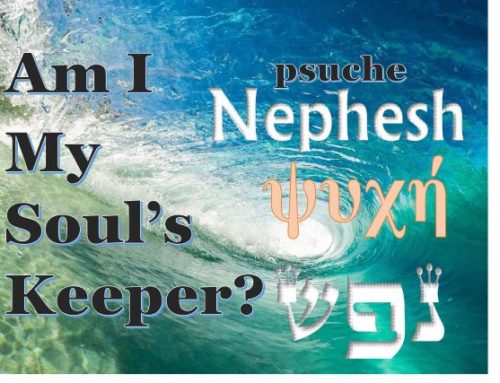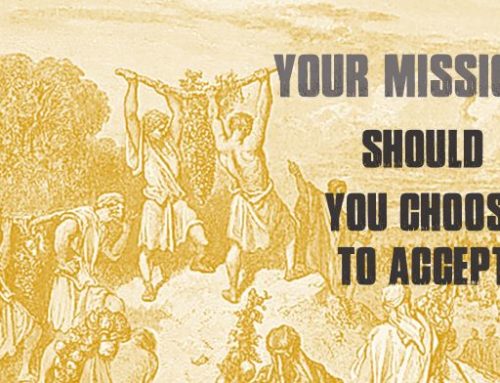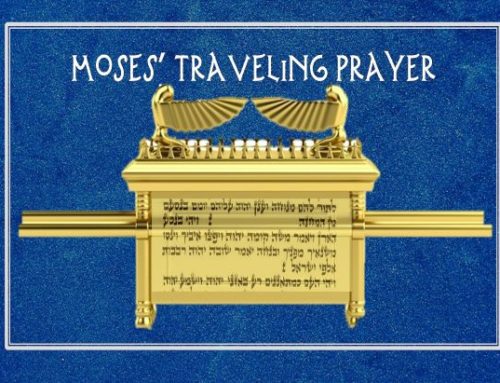Torah Portion, Tazria-Metzora, Leviticus 12.1-15.33, Haftarah, 2 Kings 4.42-5.19, 7.3-20
In the year 2000, an intact Second Temple tomb was discovered not far from the famous Caiaphas tomb. Inside lay the shrouded remains of a man, but unlike the burial custom of the time, his intact body had been sealed off, and his bones were not gathered after a year to into an ossuary or bone box. DNA analysis revealed the reason. This man, either a priest or aristocrat, suffered from leprosy, what we call today, Hansen’s disease.[1]
Both our Torah portion, Tazria-Metzora, and the New Testament reveal the heartbreaking realities of this disease. Jewish historical sources detail the fears associated with it. Midrash Vayikra gives us a window into the debate of two famous Rabbis regarding leprosy (tzaraat). Rabbi Yohanan forbade one to stand within four amot (two meters) to the east of a Leper. Why the east? Because prevailing winds of Jerusalem are from west to east. Rabbi Shimon disagreed. He set the distance at one hundred amot (fifty meters) if on the east side. A third opinion made agreement between the two, “if there is no wind, four amot, and if the wind is blowing, one-hundred amot.”[2]
During this same period, we read the story of no less than twelve individuals whom Yeshua healed of this disease. For the next few moments, we want to talk about one of those. His story is found in three of the Gospels. In the physician Luke’s Gospel, we are given a window into the condition of the man, the cry of the man, and the cure of the man. Yeshua’s response that that cry speaks to every person burdened by the isolation of sin.
I. The Condition of the Man
“And it happened when He was in a certain city, that behold, a man who was full of leprosy saw Jesus.” Luke 5.12a NKJV
Our Torah double portion details the priest’s role in diagnosing leprosy. Biblical leprosy was a mysterious skin disease, much wider in scope than Hansen’s disease, leprosy of today. Though it included Hansen’s disease, it also detailed a spreading plague on houses and even garments. It was considered a physical condition with a spiritual cause.
What do we know of this man who approached Yeshua? At some point he had been examined by priest, told to wait seven days, and examined again.
“The priest shall examine the sore on the skin of the body; and if the hair on the sore has turned white, and the sore appears to be deeper than the skin of his body, it is a leprous sore. Then the priest shall examine him, and pronounce him unclean.” Leviticus 13.3 NKJV
Full of Leprosy
Luke, being a physician, gives us a detail which Matthew and Mark leave out. He described the man as “full of leprosy”. What began as a small spot, now consumed the man. One important determining factor in the diagnosis was whether the sore appeared deeper than the skin. Leprosy eventually consumes deep tissue, organs and the bones. Such was the condition of this man!
In many ways, leprosy is like sin in a person’s life. At first it is easy to hide. We ignore it as an unnoticed mark hidden beneath our garments. Eventually however, its spread become visible to others. Secondly, like leprosy, sin starts out as something minor on the surface. Eventually it reaches deeper than the skin, affecting bones, organs and destroying the heart. Neither priests nor physicians could cure leprosy. Though only a priest could diagnose leprosy, only God could heal leprosy. Finally, like leprosy, sin disfigure the image of God in our lives, and its uncleanness separates us from community and our family. So how did people respond to lepers in the time of Yeshua?
The historical accounts of Rabbis Yohanan and Shimon in our earlier Midrash give us insight. It is said, Rabbi Meir would not eat in the “offshoots of an alley” if it led to a leper. Reish Lakish threw stones at lepers to get them further away, and Rabbi Shimon hid from them. But the New Testament account of this describes an unnamed leper from an unnamed town bowing low before Yeshua. Let us examine Yeshua’s response to the cry of the man.
II. The Cry of the Man
“And he fell on his face and implored Him, saying, “Lord, if You are willing, You can make me clean.” Then He put out His hand and touched him, saying, “I am willing; be cleansed.” Immediately the leprosy left him.” Luke 5.12b-13 NKJV
Undoubtedly this man came closer to Yeshua than was permitted, closer than perhaps some wished. But the man’s cry of faith would not be denied. “Lord, if You are willing, You can make me clean.” There were those who approached Yeshua with almost no faith. One man pleaded for his son with these pitiful words, “But if You can do anything, have compassion on us and help us.” To which Yeshua replied, “If you can believe, all things are possible to him who believes.” Mark 9.22-23 NKJV Already we see that this leper believes in the ability of Yeshua to heal, a miracle that only God could do. Were there others in the New Testament with more faith than this man? Yes, there were. For though he fully trusted in Yeshua’s ability, he doubted whether Yeshua was willing to heal him. And for a moment I want to speak to this doubt, for it is shared by many today.
They do not doubt the authority of God and the Lord Yeshua. They do not doubt the Messiahship of Yeshua or His ability. Their struggle is that of the man who asked, “Is He willing?”
And so let this man’s story dispel your doubts. Yeshua did not lick the tip of His index finger and raise it in the air to see which way the wind was blowing. No, He reached out and touched the man saying, “I am willing; be cleansed.”
How many hide in the shadows wondering if the Lord of the Universe will accept them, fearing their uncleanness? You need not wonder. His hand is already extended. His words have already been uttered. What remains is for the sinner to cry unto Him. Now we must examine the cure of the man for it speaks to our generation’s need of a Savior.
II. The Cure of the Man
“Immediately the leprosy left him. And He charged him to tell no one, “But go and show yourself to the priest, and make an offering for your cleansing, as a testimony to them, just as Moses commanded.” Luke 5.13b-14 NKJV
Though the man’s healing was instantaneous the moment Yeshua’s spoke those words and touched him, his rehabilitation and restoration were a process. Yeshua commanded the man to also do what was required in our Torah Portions of Tazria-Metzora. Why do you think Yeshua sent him to the priests?
“And the priest shall go out of the camp…then the priest shall command to take for him who is to be cleansed two living and clean birds, cedar wood, scarlet, and hyssop. And the priest shall command that one of the birds be killed in an earthen vessel over running water. As for the living bird, he shall take it, the cedar wood and the scarlet and the hyssop, and dip them and the living bird in the blood of the bird that was killed over the running water. And he shall sprinkle it seven times on him who is to be cleansed from the leprosy, and shall pronounce him clean, and shall let the living bird loose in the open field.” Leviticus 14.3-7 NKJV
Even after the healing we see three phases to his restoration. The priest examined the man, and if healed he offered a ceremony of two birds, cedar wood, scarlet, hyssop and earthen vessel. This was a ceremony of high drama. Like the scape goat on the Day of Atonement, one bird was killed over running water, the other was dipped in its blood and set free. No doubt this leper saw himself in this ceremony as the one transformed, dipped in the blood of the sacrifice, given another opportunity, set free! Following this, the man had the waiting period of seven days, and finally he appeared in the Temple courts to offer the sacrifice.
Many identify with the man instantly healed. Their sin and shame is forgiven, and yet healing often requires process, and they cry out, “can’t I skip the process?”
In the late 1980s there was a famous evangelist from the United States, known worldwide. He found himself with a leprosy of sin. For a long time, he hid its spots, but eventually others could see the sickness. On national television he tearfully cried out that he had sinned, and asked God to forgive. I believe that God forgave that man the moment he repented. Yet, the leaders over him said that he needed to go through a year’s process of restoration before ministering again.
Unfortunately, the man refused, leaving many with doubts about the man’s restoration and fitness to continue ministry.
Yeshua insisted the man go to the priests for a testimony. Process gives testimony to others that the miracle is genuine. The man was completely healed the moment Yeshua touched him, but the community needed to know that he was healed. It was the role of the priests to declare one clean and healed, and Yeshua did not bypass their role in the man’s restoration.
Conclusion
Yeshua did not hide from lepers nor shy away from sinners. The Lord loves you; He desires to transform your life. Two birds were taken, a scarlet cord tied one to the cedar plank, its blood marked the second for freedom. What does it all mean? Yeshua, the righteous son of God met an unclean leper, a sinner on the outskirts of a city. The One’s touch set the other free. His touch still sets sinners free. Like the one bird, Messiah was bound to the tree where water and blood flowed. As the great English poet, William Cowper, beautifully said, “There is a fountain filled with blood, drawn from Immanuel’s veins, And sinners plunged beneath that flood; lose all their guilty stains.” The Cry of that leper has set aside the doubts of many. He has asked the question which many of us struggle. Do you want to heal? Are you willing to forgive? Yeshua’s reply still rings forth – “I am willing; be cleansed!”
[1] By Steve Weizman, “Ancient Leper’s Bones Found in Jerusalem,” NBCNews.com (NBCUniversal News Group, December 31, 2003), https://www.nbcnews.com/id/wbna3849407.
[2] Vayikra Rabbah, 16.3





Thank you for sharing such a powerful message. It is wonderful to know, that no matter how reluctant or scared we are, he is always willing!